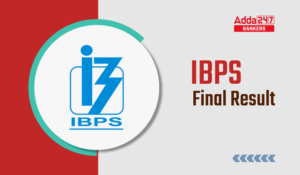Table of Contents
Learning about treasury bills: It is one of the money market instruments issued by the government of India, commonly known as the treasury bill, which is like a promissory note that will guarantee payment at a later date. These bills allow the government to collect funds for short term requirements and help reduce the fiscal deficit. Treasury bills are borrowing tools which have a short duration of about a year with no interest coupon. They get issued at a discount and get published at a nominal value as per government security.
Individuals are allowed to buy these treasury bills at a discount of the face value of the security, which then gets redeemed to their nominal value. By doing this, the investors can gain the difference as profit.
These bills are raised to meet the on-going obligations of the economy, which are more than the annual revenue generated. Treasury bills help the circulation of the currency to be regulated at any given point of time. The RBI has the right to issue the treasury bills under its open market operations strategy to
- Regulate the inflation level
- Regulate the spending or the borrowing habits of people
When treasury bills are released?
- When there is economic growth, but the inflation rates are persistent, there is a need to reduce the aggregate money supply in the economy. Treasury bills are issued so that it will help curb the demand rates, which had caused high prices and pressurized the weaker sections of the society.
- During the recession, which causes an economic slowdown, the RBI reduces the circulation of the treasury bills and instead sees that it gets discounted into bonds. Since they don’t harbor much profit, people invest in stock markets. It is an excellent way to help increase productivity in the companies and boost the economy in turn.
You might have understood that treasury bills are a tool utilized by RBI effectively to regulate the money supply in the economy as well as using it as a fundraiser in reducing the fiscal deficit.
There are different types of treasury bills issued by the government, which have varying face values and discount rates, that change according to the funding requirement, monetary policy, and total bids placed. The changes are periodic, and so are the bills which begin from 91 day, 182 day and 364-day treasury bills. The following table shows Treasury Bills – Chronology of Developments (source RBI’s official website)
|
Type of T-Bill |
Introduced |
Discontinued |
| 91 days T-Bill on weekly auction |
Before 1950s | Mid-1950s |
| 91 days Ad-hoc T-Bill | Mid 1950s | April, 1997 |
| 91 days T-Bill on Tap | Mid 1950s | March, 1997 |
| 182 days T-Bill on weekly auction |
November, 1986 | April, 1992 |
| 14 days T-Bill on weekly auction |
April, 1997 | May, 2001 |
| 364 days T-Bill on fortnightly auction |
April, 1992 | |
| 91 days T-Bill on weekly auction |
January, 1993 | |
| 182 days T-Bill on weekly auction |
Re-introduced in June, 1999 | May, 2001 |
| 182 days T-Bill on weekly auction |
Re-introduced in April, 2005 |
The features of the T- bills
- These bills have a minimum investment which is needed for procuring these short term treasury bills
- There is no interest in total deposits made by the individual, only capital gains or the substantial profits on the total investments is gained by the investor
- There are auctions of these bills every week in the market. The investor can participate through
- Depository participant commercial banks
- Registered primary dealers (settlement is T+1 process)
These auctions depend on the total bids which get placed in major stock exchanges
Practice With,
You can find that some of the open-ended mutual funds that include the treasury bills in their corpus, who are ready to invest in them.
The yield rate is calculated thus,
Y=(100-P)P ×365D ×100
- Wherein Y is the return
- P is the discounted price the security is bought
- D is the tenure of the purchased bill
Benefits of treasury bills
- They are risk-free
- They provide liquidity in the economy
- There is a non-competitive bidding process
Limitations to the bill
- Lower returns
- Zero-coupon securities
- The gains are taxed
It is a good investment tool because it provides security, and it allows for portfolio diversification.
Due to the COVID-19 outbreak, the economic slowdown has caused the government to be cash strapped, hence the use of treasury bills to reduce the cash flow stress on the economy.
Click Here to Register for Bank Exams 2020 Preparation Material
Visit Achieversadda.com and participate in discussions with other aspirants and achievers. Get answers to your queries and connect with others on Achieversadda.com
| SBI PO 2020 | IBPS PO 2020 | SBI Clerk 2020 | IBPS Clerk 2020 |
| RBI Grade B 2020 | RBI Assistant 2020 | LIC AAO & AE | SEBI Grade A 2020 |



 IBPS Final Result 2025 Coming Out Tomorr...
IBPS Final Result 2025 Coming Out Tomorr...
 Simple Tips to Avoid Common Mistakes In ...
Simple Tips to Avoid Common Mistakes In ...
 Important Topics & Shortcuts for IDB...
Important Topics & Shortcuts for IDB...


